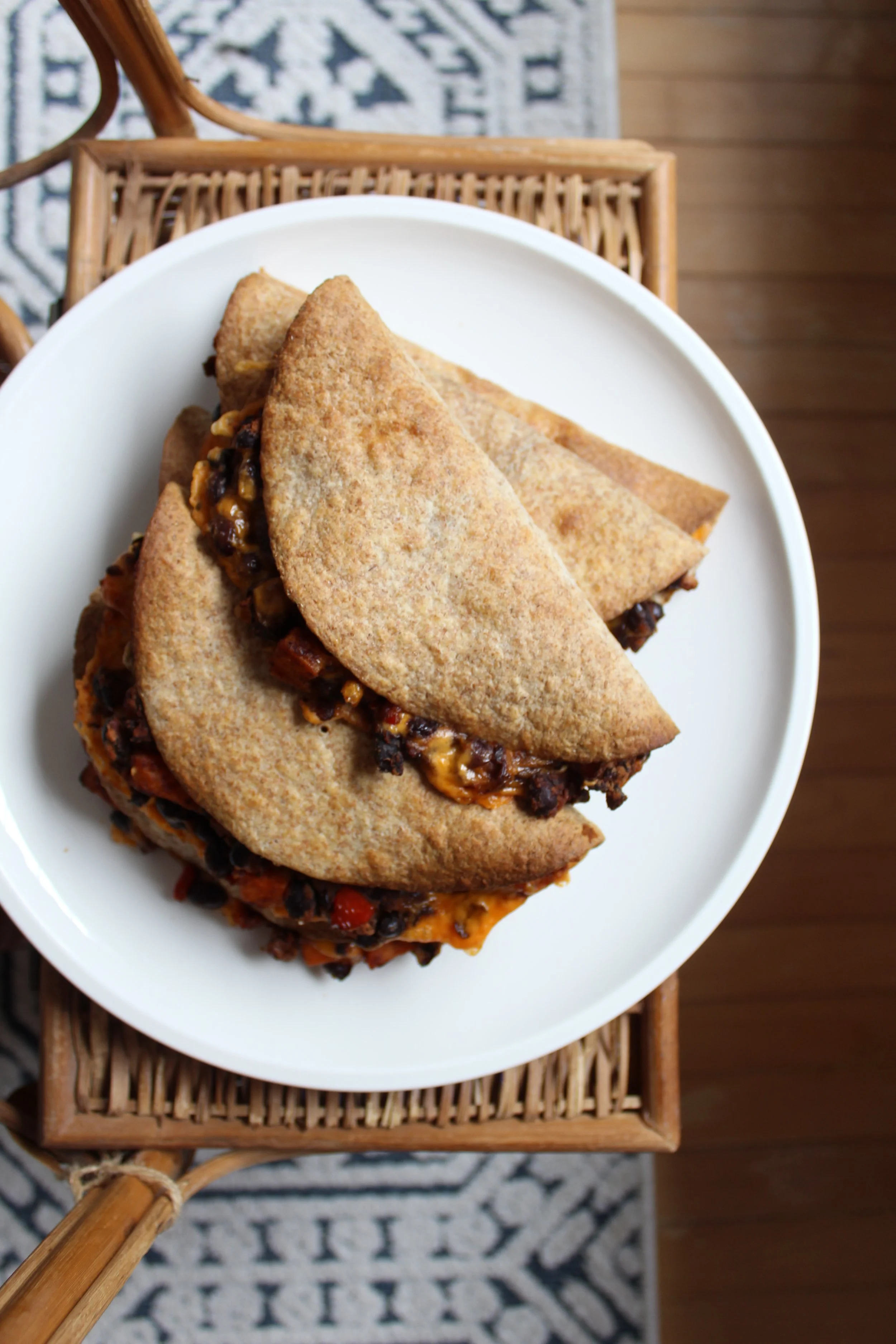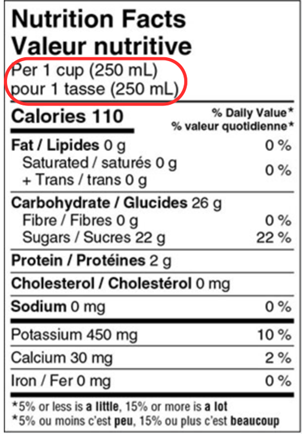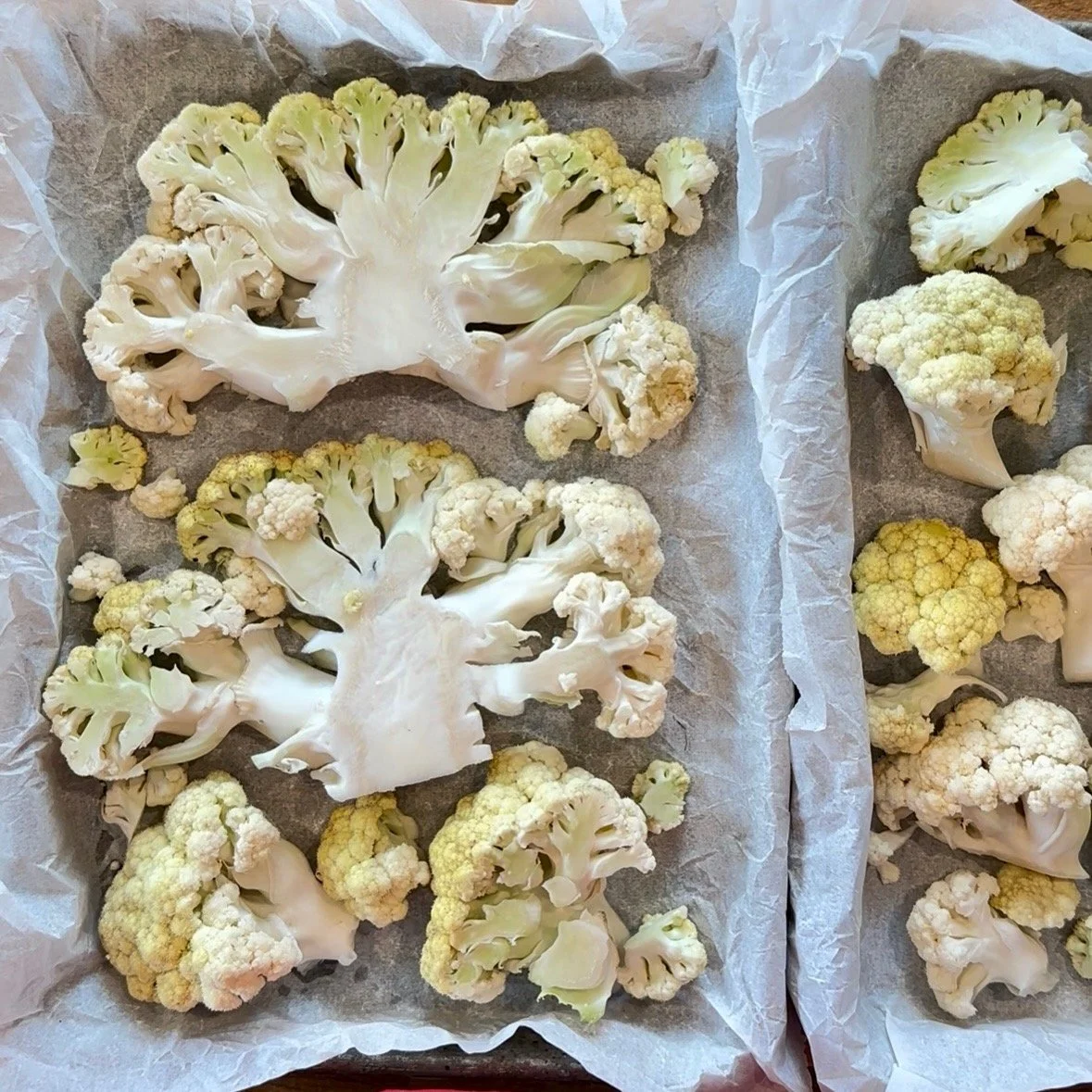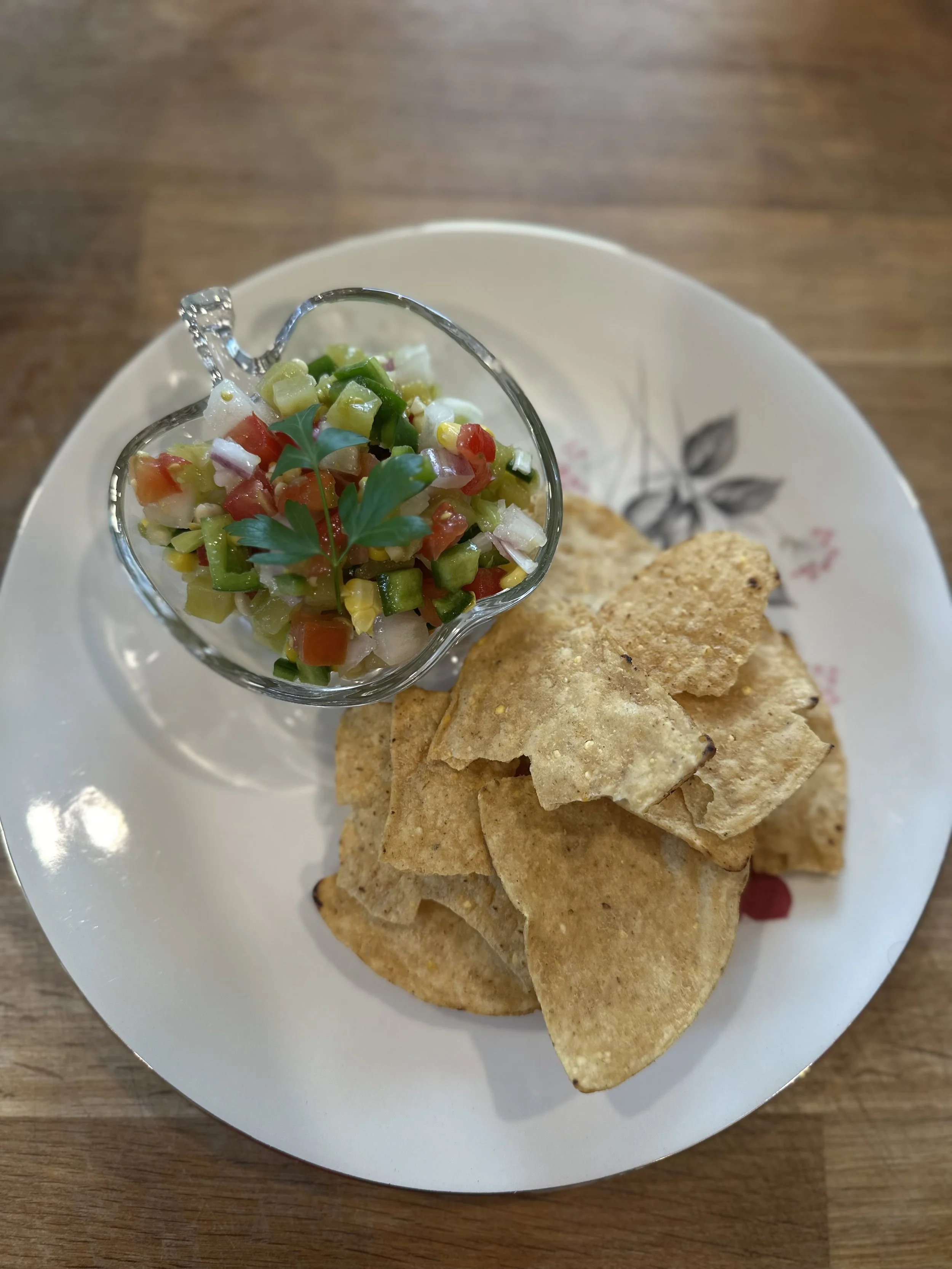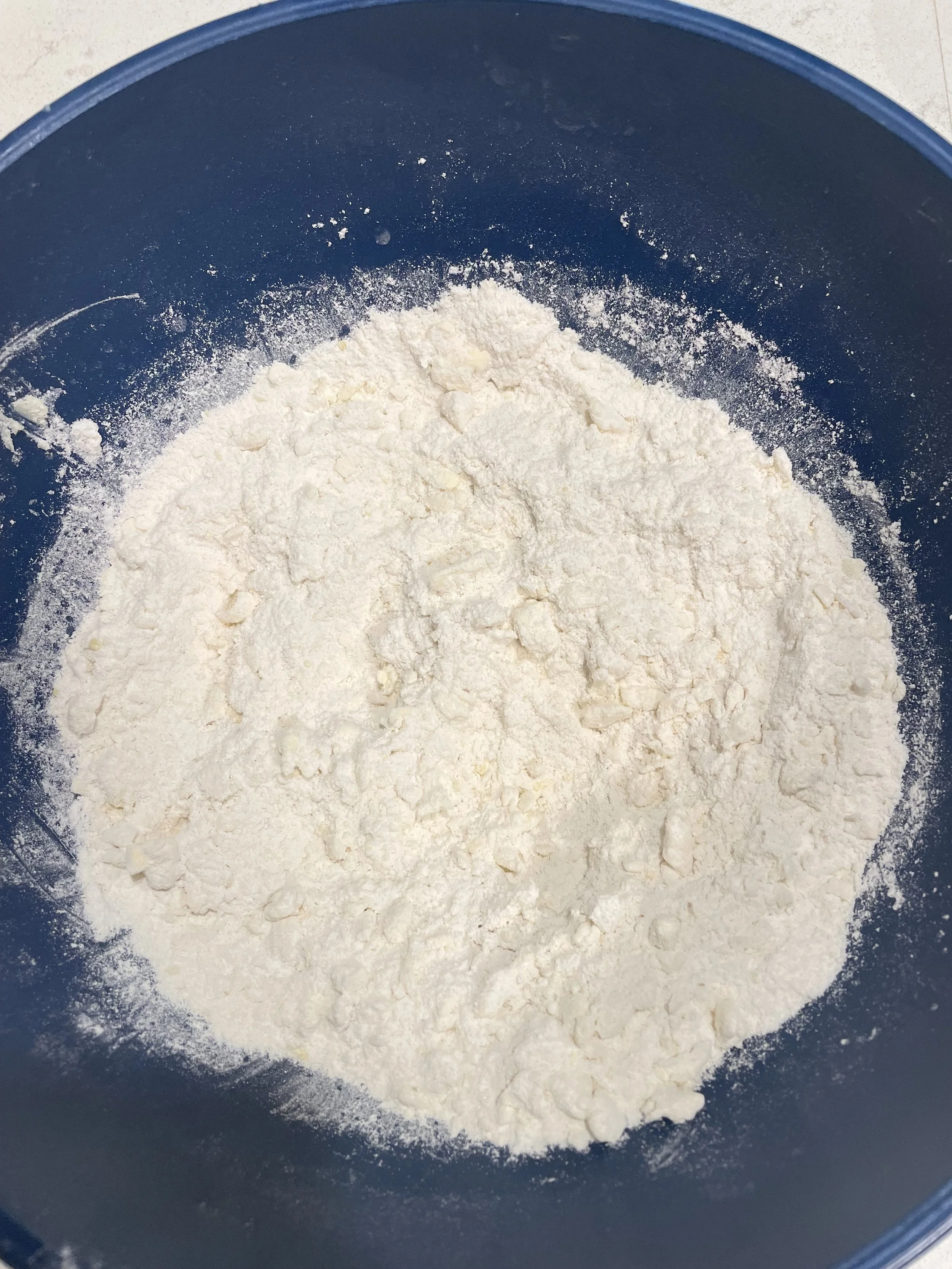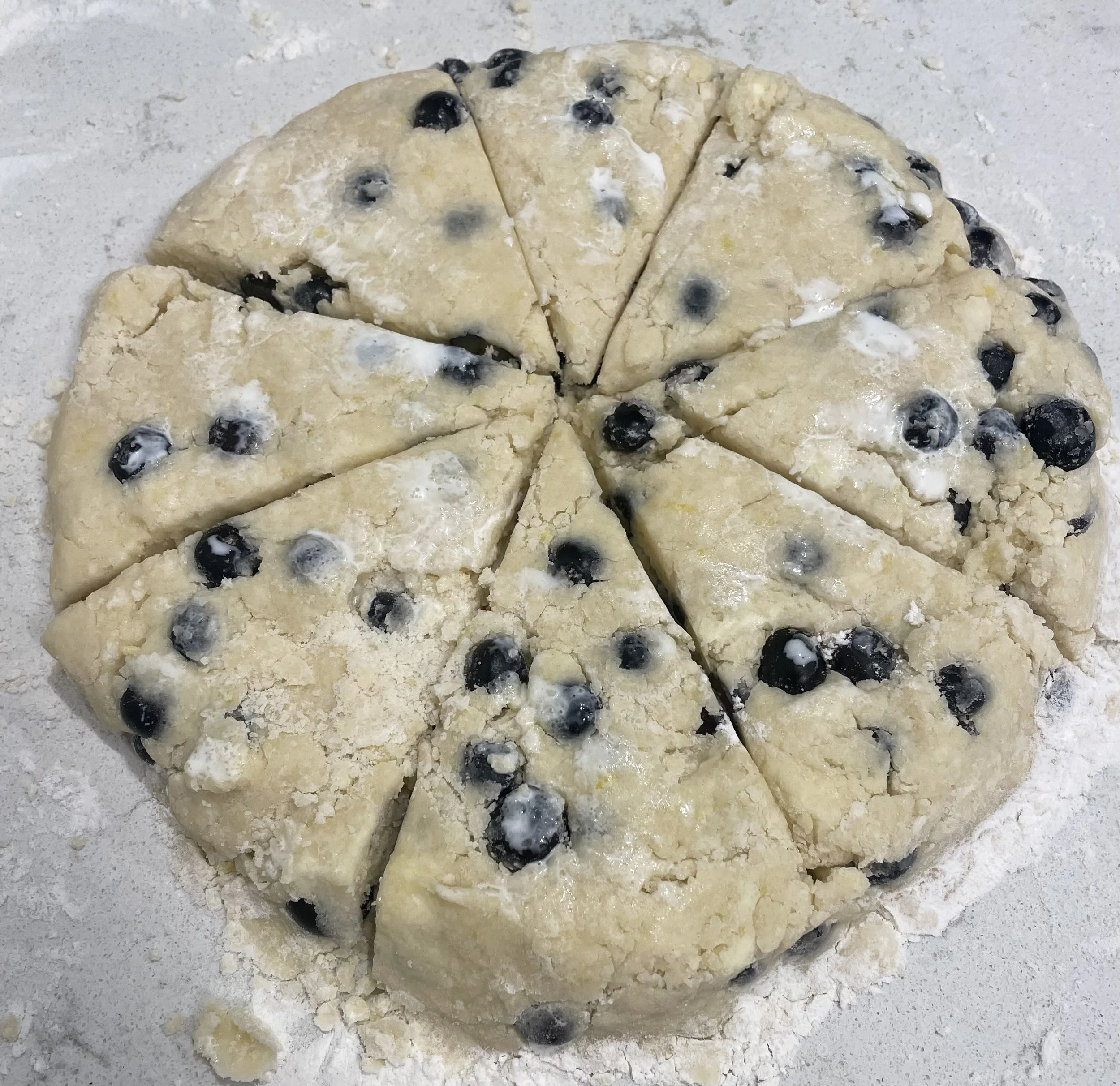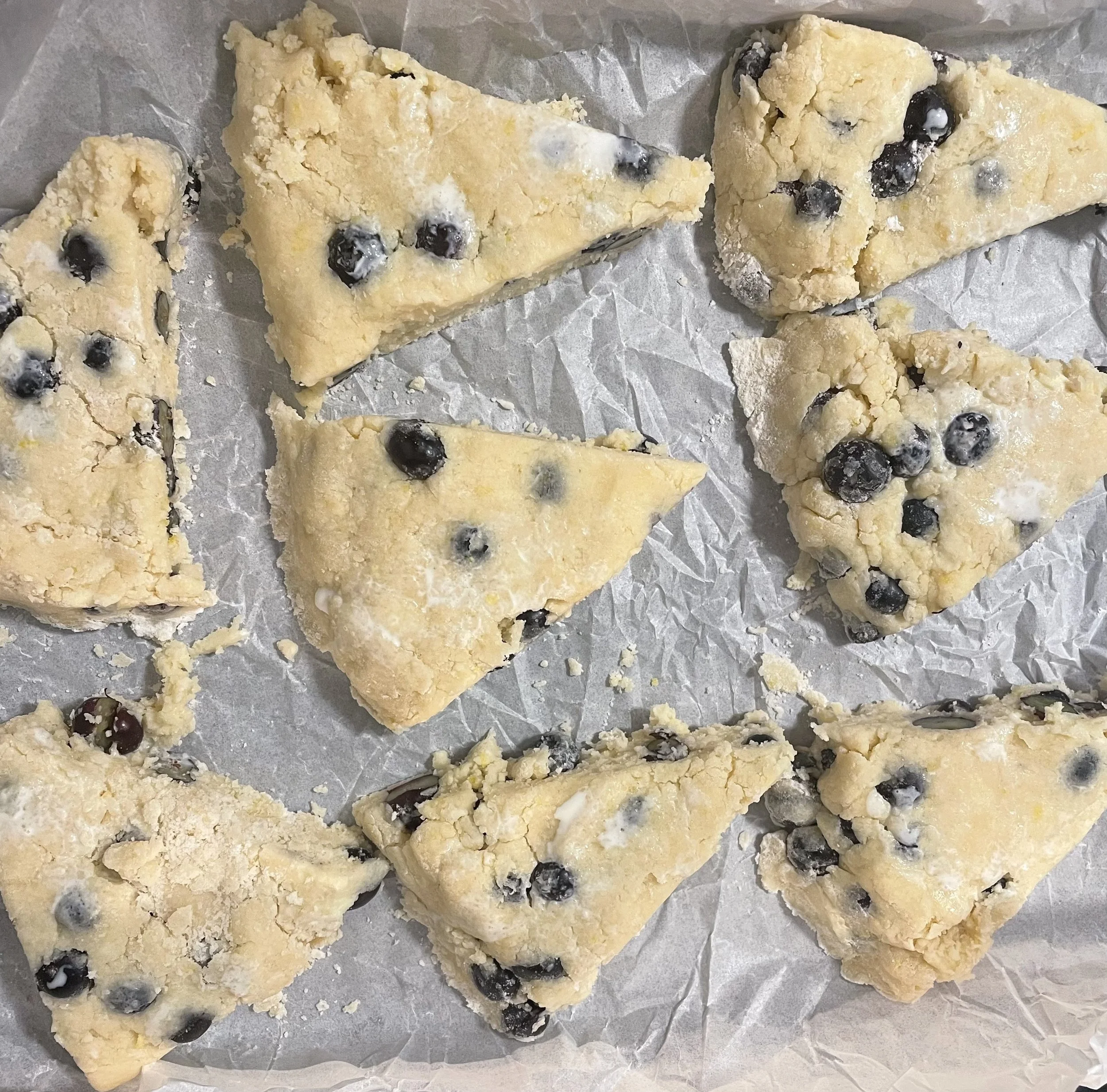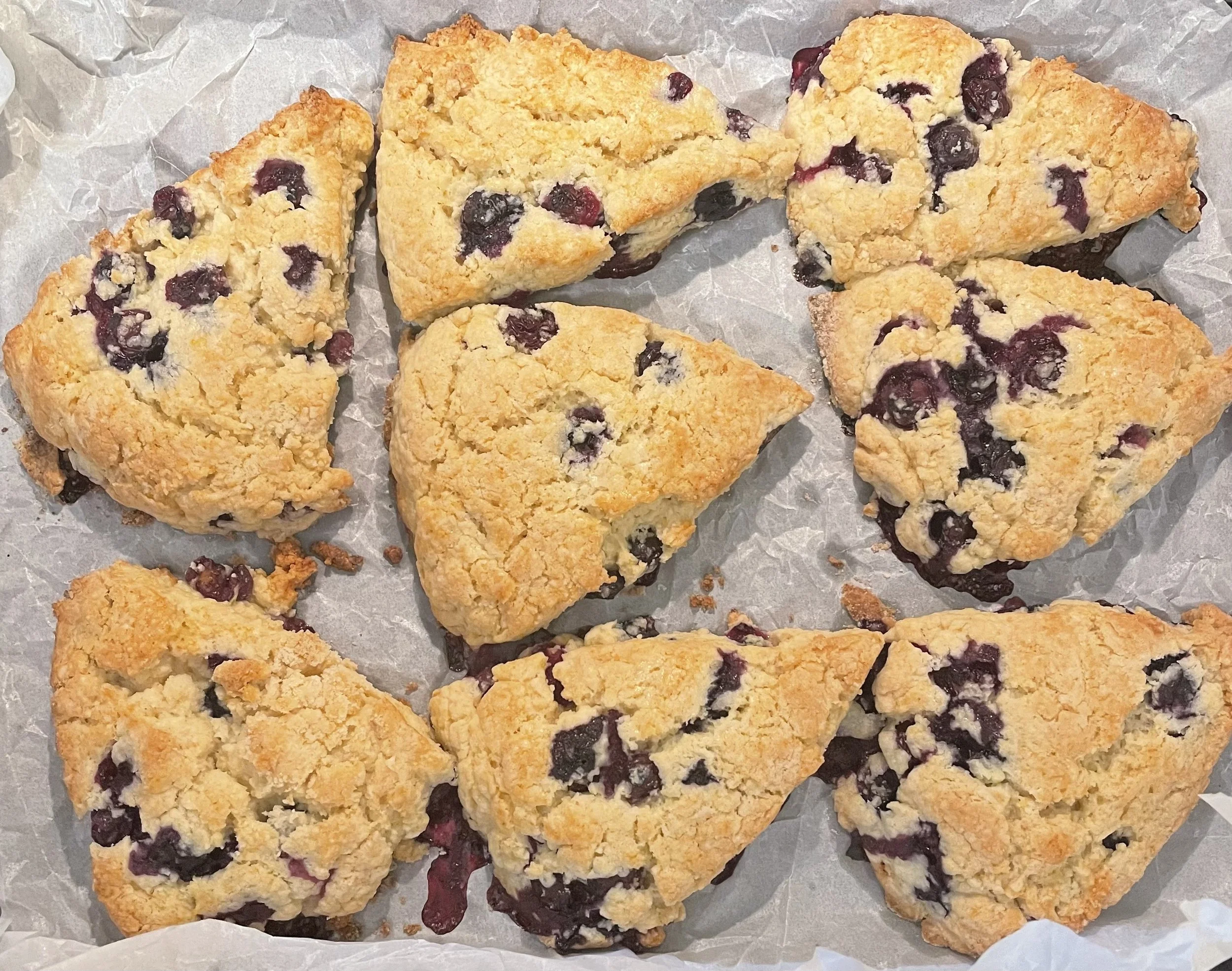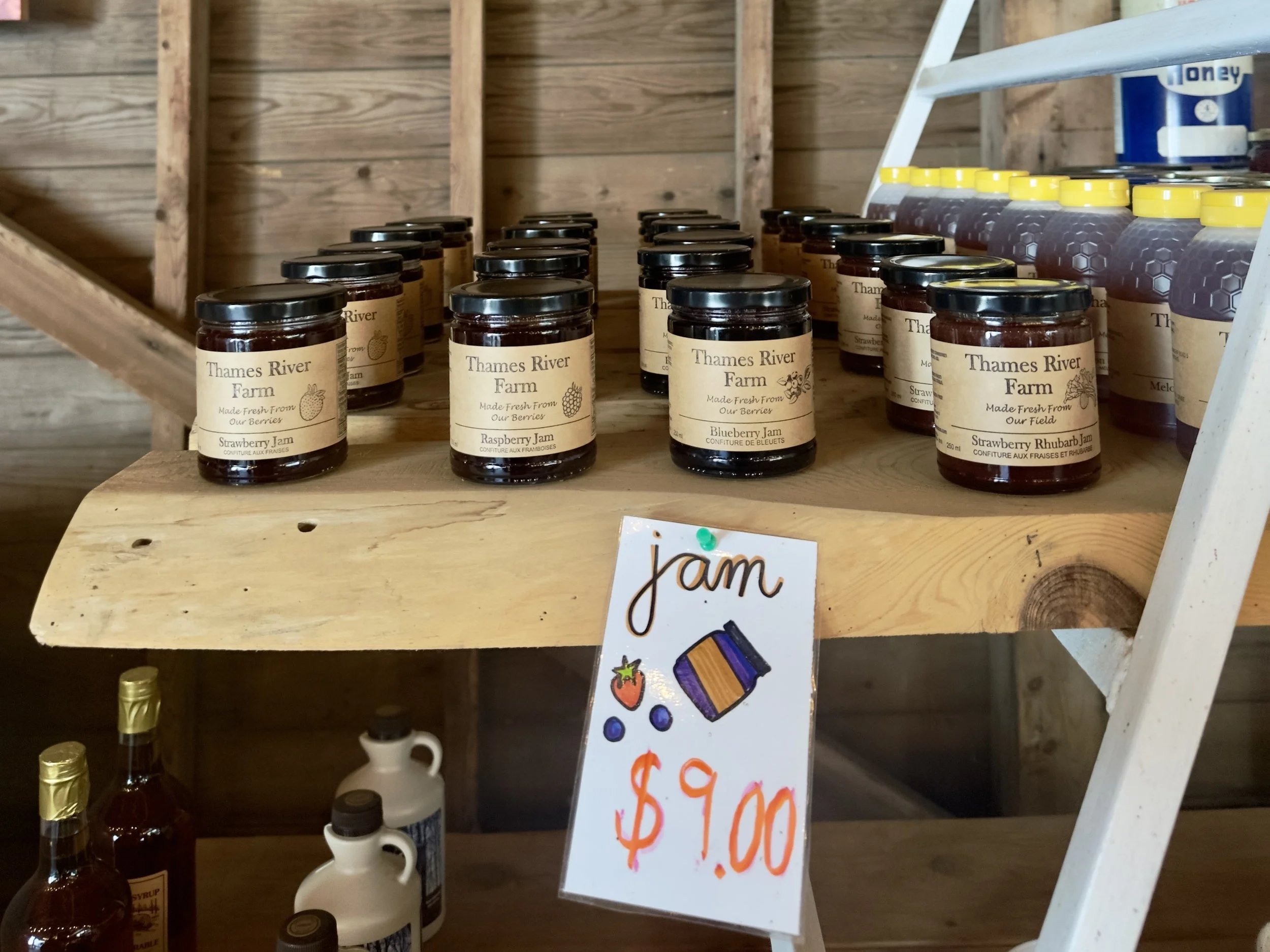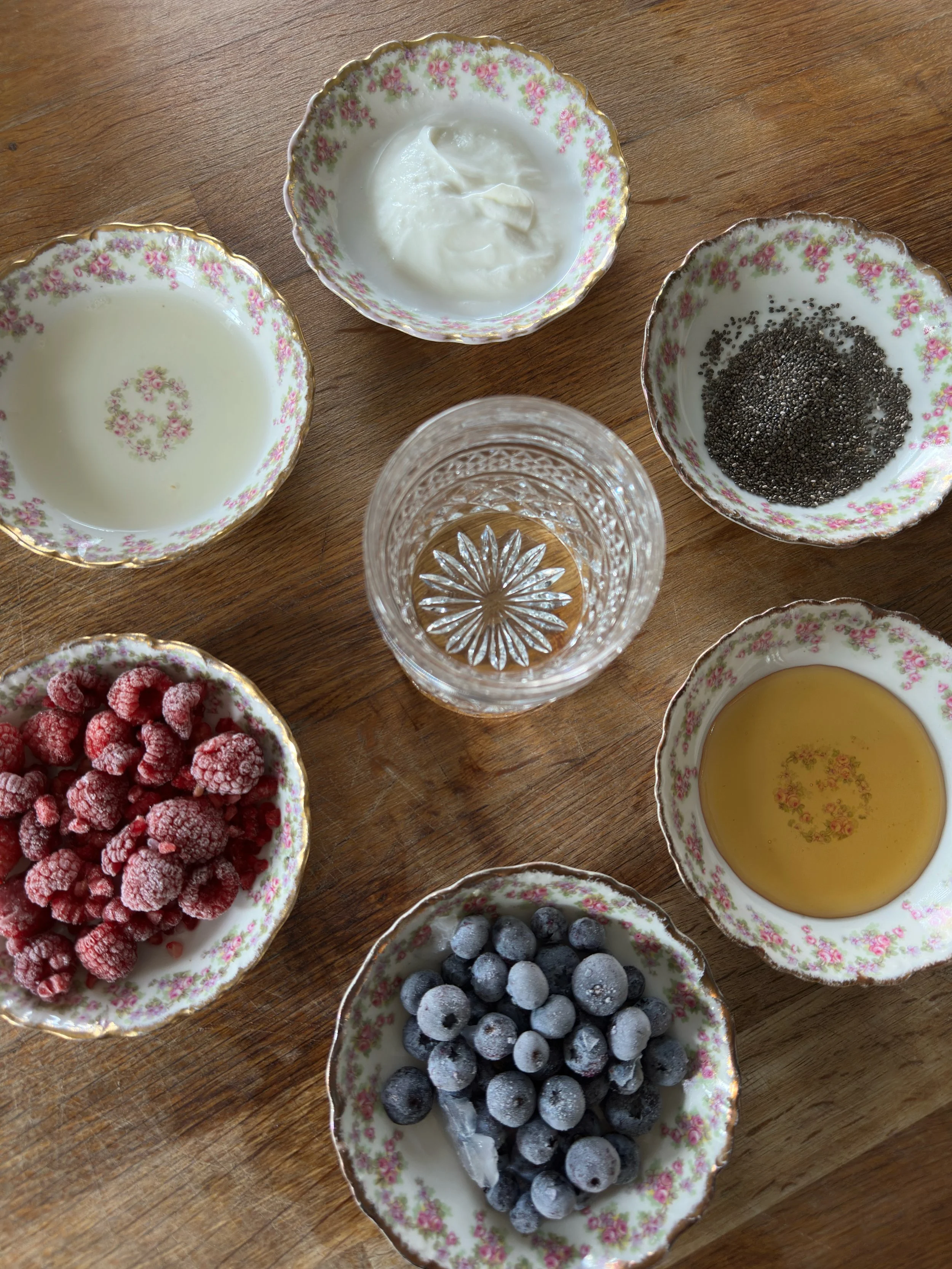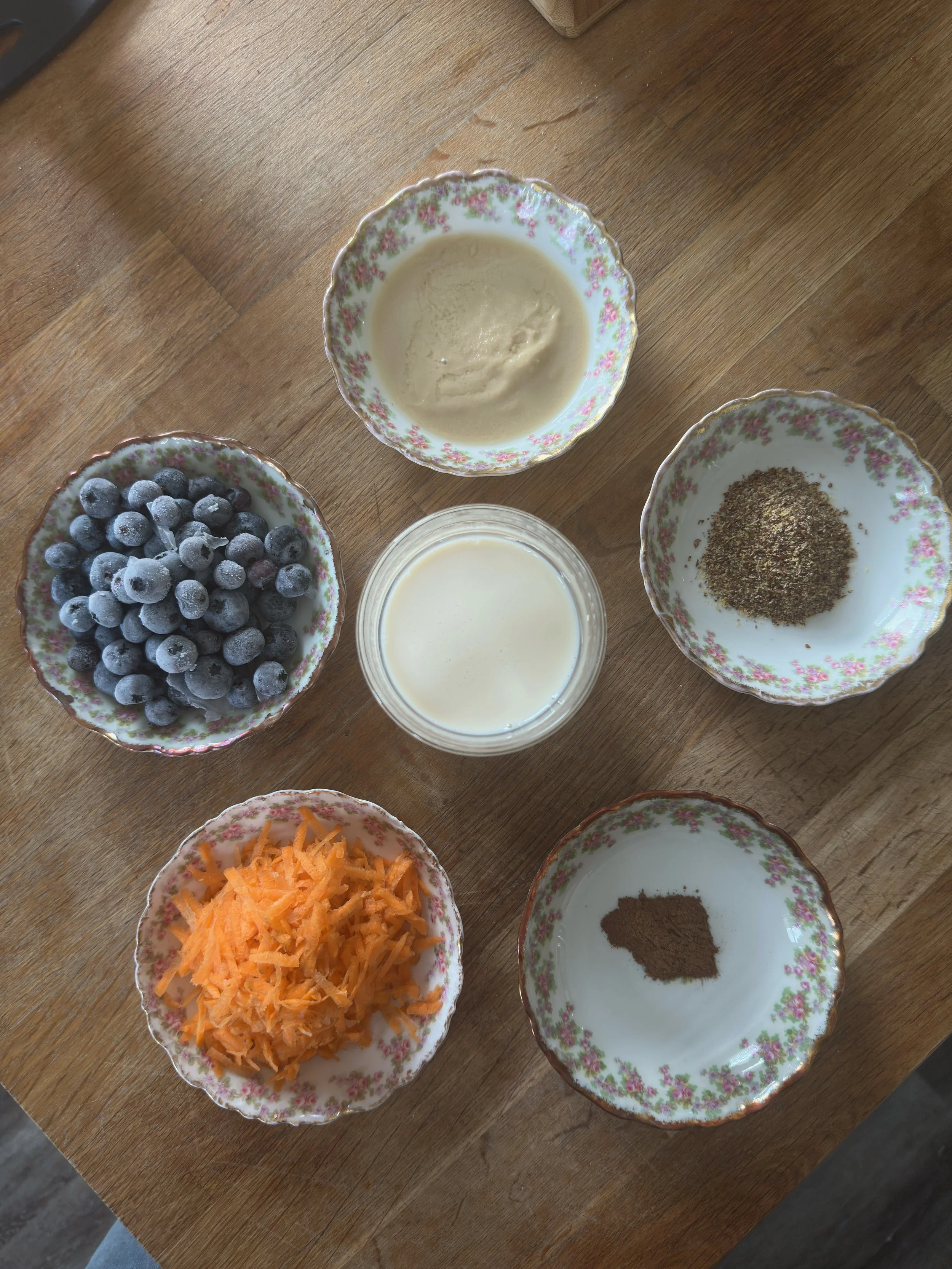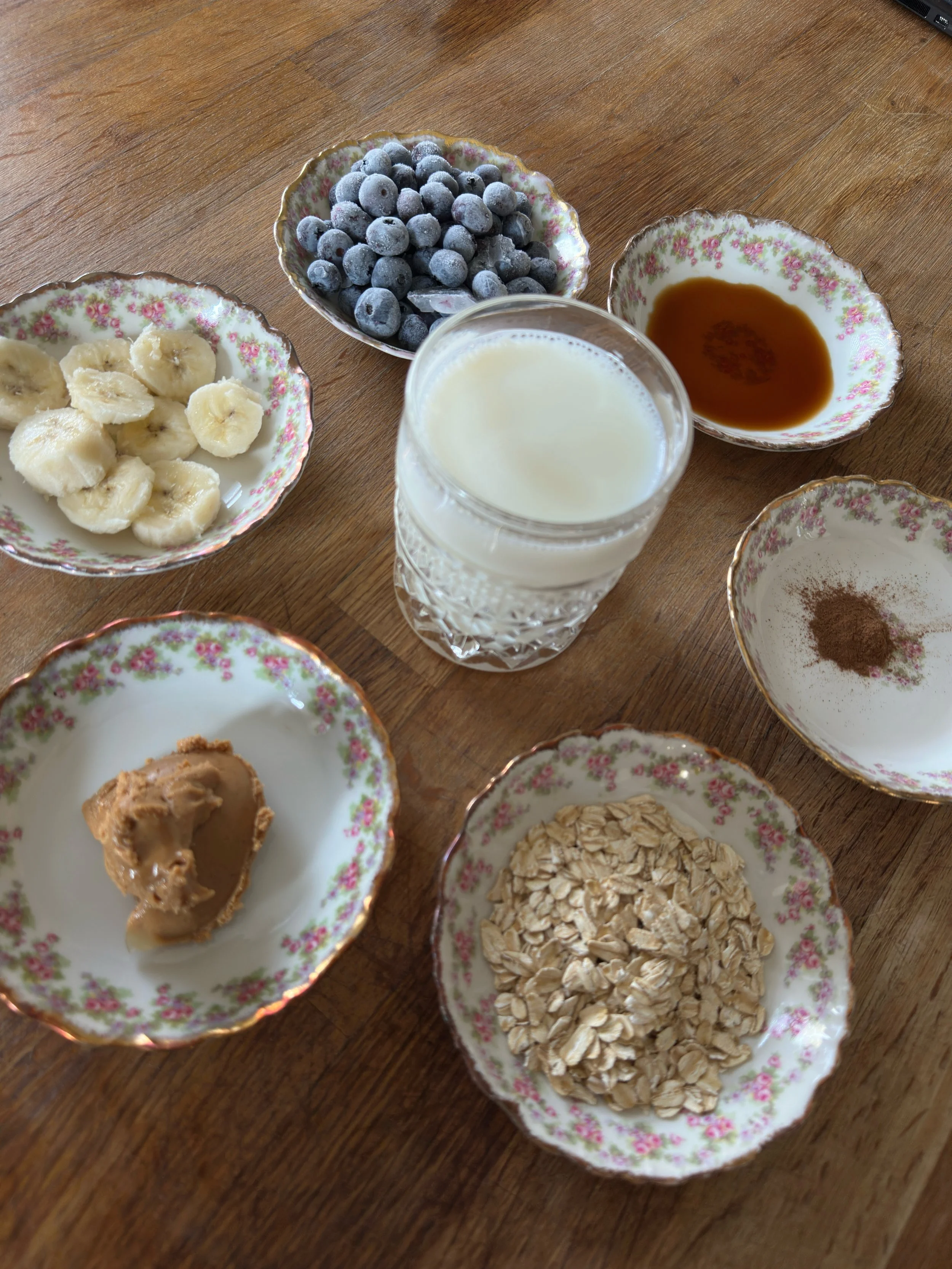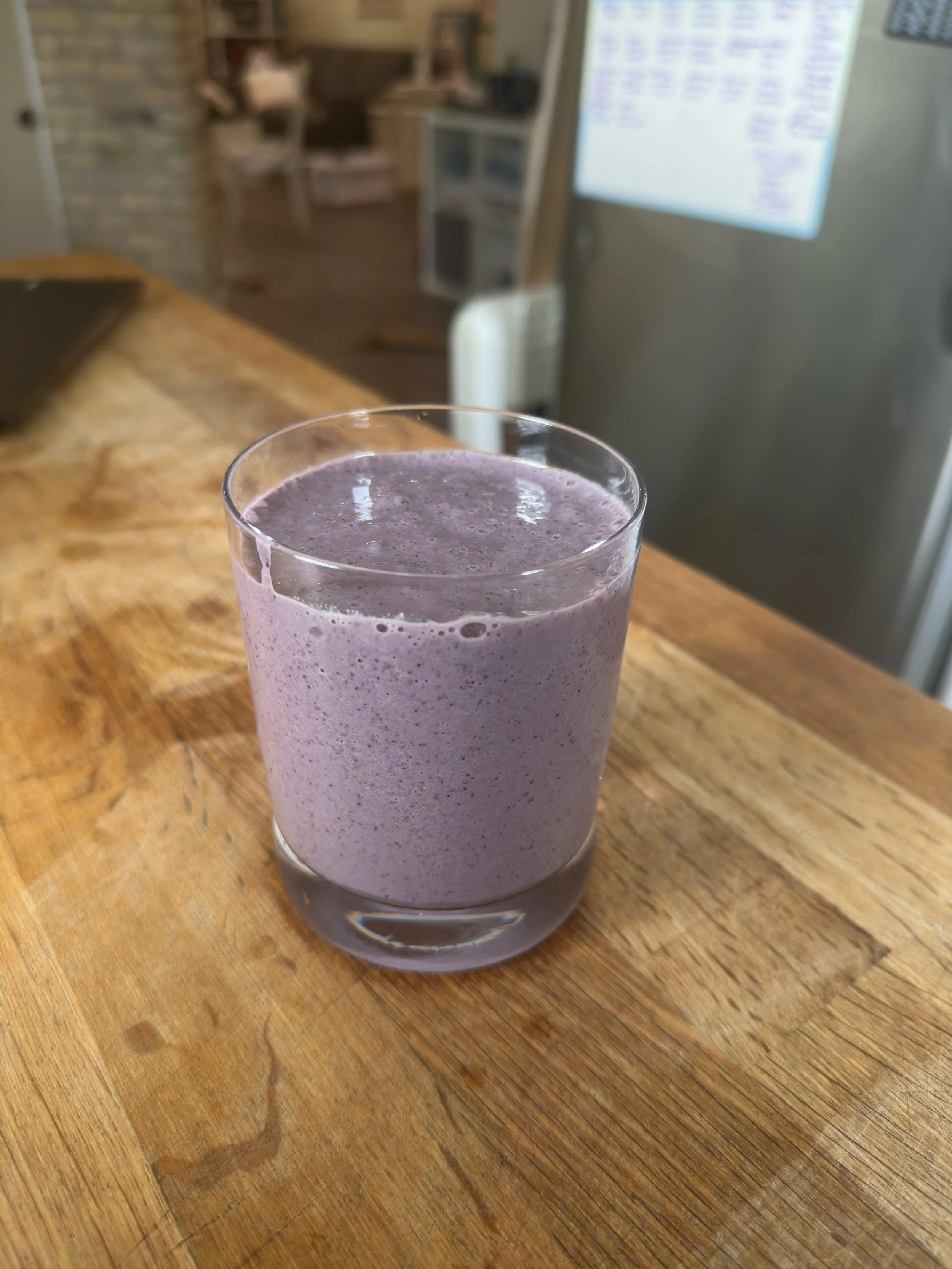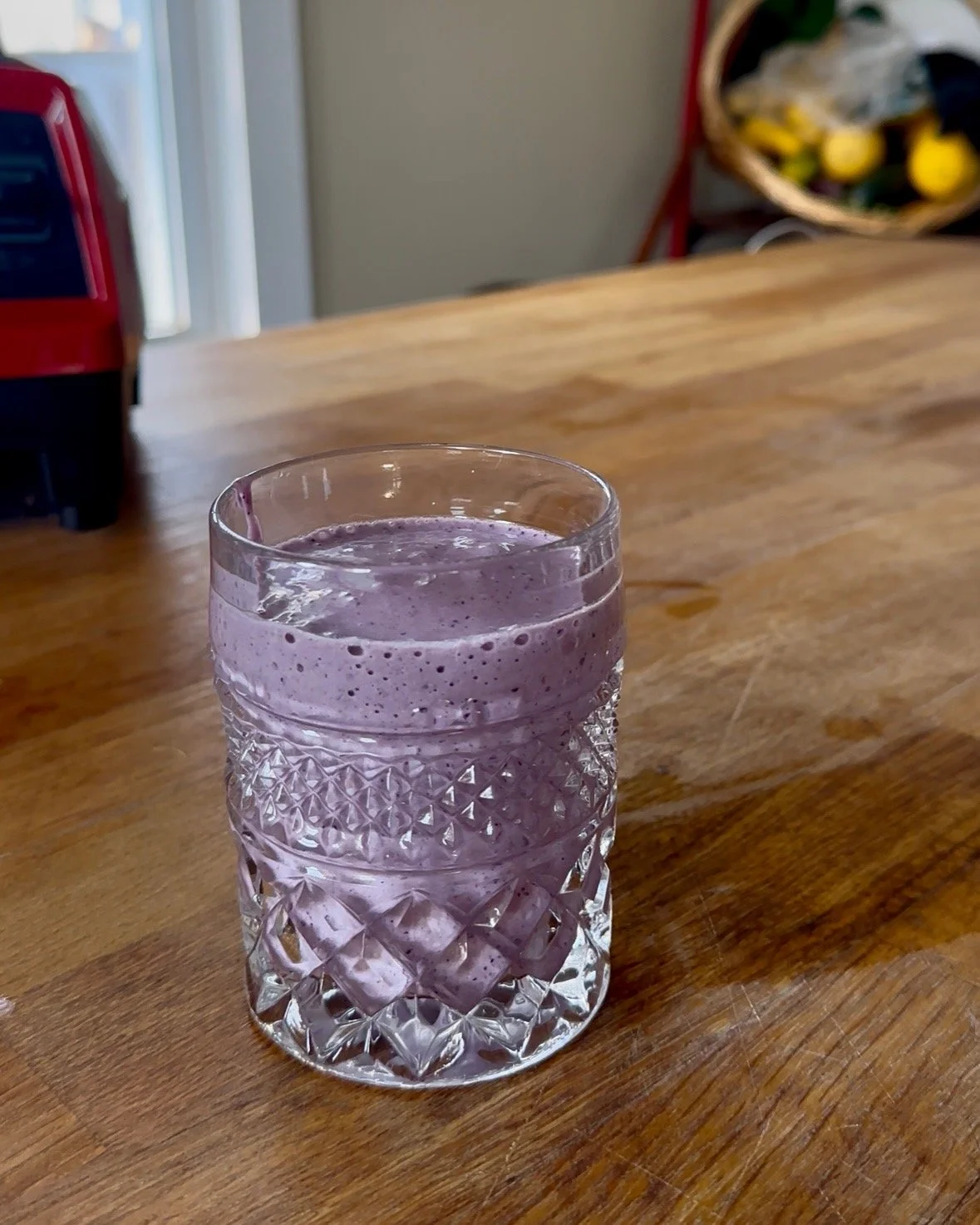A sneaky way to gain all the nutritional benefits of liver.
Read moreBeef Stew with Cheddar Green Onion Dumplings
Ingredients
For Stew
2 lbs stewing beef
Salt
Pepper
3 tablespoons cooking oil
1 onion, diced
2 stalks celery, diced
3 cloves garlic, minced
1 teaspoon dried thyme
1 cup red wine (or an additional cup of broth)
4 cups beef broth
3 large carrots, diced
2 potatoes, cubed
2 tablespoons tomato paste
2 teaspoons Worcestershire sauce
1 bay leaf
2 tablespoons flour
For Dumplings
1 ¾ cups flour
1 tablespoon baking powder
½ teaspoon salt
2 green onions, diced
1 cup shredded cheddar cheese
¾ cup milk
Instructions
Season the cubes of stewing beef with salt and pepper. Heat 2 tablespoons of the oil in a large, heavy pot over medium-high heat. Brown the beef in batches until all sides are nicely seared. Remove the browned beef from the pot and set aside for later use.
In the same pot, add the remaining oil. Next add onion and celery, and cook for 5 minutes or so, until soft. Add garlic and thyme and cook for 1 additional minute. Finally, add tomato paste and cook for another minute, stirring frequently.
Pour red wine into the pot and scrape up any browned bits on the bottom. Return the beef to the pot followed by the beef broth, Worcestershire sauce, bay leaf, carrots, and potatoes.
Transfer entire contents of the pot to a slow cooker, and cook on low for 7 – 8 hours or high for 4 – 5 hours.
After the slow cooking time has completed, return the stew back to the original pot and place over medium heat. Whisk together the flour with some water until a thickened liquid has formed, then stir that into the contents of the pot.
Now, prepare to add the dumplings!
To make the dumpling batter, whisk together flour, baking powder, salt, and herbs in a bowl. Stir in milk and melted butter, followed by shredded cheese and diced green onion. Mix until just combined.
Drop spoonfuls of dumpling batter over the simmering stew. Cover and cook without lifting the lid for 15-20 minutes, until dumplings are puffed up and cooked through. If you’d like to add more colour, and if your pot is oven-safe, place under the broiler for 2 – 3 minutes.
Remove bay leaf and serve the stew in bowls topped with a dumpling.
Recipe modified from eatwithtenderness.com by Alex Chesney, RD
Black Bean and Sweet Potato Quesadillas
Ingredients
½ large sweet potato, washed, peeled, and diced
½ bell pepper, diced
1 can black beans, drained and rinsed
1 ½ cups cheddar cheese, shredded
1 teaspoon chili powder
1 teaspoon paprika
1 teaspoon Tajin
1 teaspoon onion powder
½ teaspoon oregano
1 clove garlic, minced
6 x 7-inch tortillas
Cooking oil
Cooking spray
Instructions
Preheat oven to 375°F. Line a baking sheet with parchment paper and set with aside.
Heat ~1 tablespoon cooking oil in a large pan over medium heat.
Sauté sweet potato and bell pepper for 8 – 10 minutes until soft.
Add seasonings and garlic and continue to stir and cook for an additional 2 minutes or so.
While the seasoned vegetables cook, transfer the black beans to a medium-sized bowl and partially mash – some beans should remain whole while others are mushed up completely.
By now, the vegetables should be thoroughly coated in spices and softened. Add remaining ingredients to the bowl and mix until completely combined.
Lay tortillas out on prepared baking sheet. Sprinkle each one with some cheddar cheese.
Add ½ cup of filling to the top of each tortilla and then top with more cheddar cheese.
Fold in half, spray the top with cooking spray and transfer to the preheated oven.
Bake for 15 minutes, until tops of tortillas are golden brown and cheese in filling is nicely melted.
Recipe developed and photographed by Alex Chesney, RD
How to Read Nutrition Facts Tables
Nutrition Facts tables give you a clear snapshot of what’s in the food you eat, helping you compare products to make informed choices. A nutrition facts table lists calories, nutrients, and the percent daily value (% DV) for a standard serving. So how do you actually use these?
Start by checking the serving size.
The serving size is located at the top of the table. All the information below is based on this amount, so it’s important to compare it to how much you eat. For example, if the serving size is one cup but you eat two, you’ll need to double the calories and nutrient amounts listed. In the example below, this would mean two cups would be 220 calories.
A serving size is not a recommendation of how much of the food to eat or drink but rather represents the amount of food typically eaten by consumers in one sitting. Serving sizes are selected based on reference amounts, which are established by Health Canada based on categories of food.
Understand the percent daily value (% DV).
The % DV helps you see if the food you are eating has a little or a lot of a nutrient.
5% or less DV = a little
15% or more DV = a lot
This tool allows you to compare food items to decide which ones have better sources of nutrients you want more of, and which ones are higher in nutrients you are looking to limit.
Nutrients you may want more of include: fibre, vitamin A, vitamin C, iron, and calcium
Nutrients you may want to limit include: fat, saturated fat, trans fat, and sodium
Let’s use sodium as an example.
Sodium is a mineral that helps regulate fluid balance and supports nerve and muscle function. Too much sodium can raise blood pressure and increase the risk of heart disease and stroke. You can use the nutrition facts table to compare similar products and choose the one with a lower % DV for sodium.
For example, let’s say you are comparing two burgers.
Here, because the two burgers have the same serving size, you can directly compare the % DV. In this case, if you were looking for a product with less sodium, you would choose product 2.
Make it work for you.
Choosing the healthier option isn’t always straightforward. Sometimes one product might be lower in saturated fat but higher in sodium, while another might be higher in saturated fat but lower in sodium. That’s why reading a Nutrition Facts table isn’t about finding a “perfect” food—it’s about understanding what’s in your food so you can make choices that fit your needs.
References:
Unlock Food [Internet]. Canada: Dietitians of Canada; [updated 2023 Jul 6; cited 2025 Aug 15]. Understanding food labels in canada; [about 7 screens]. Available from: https://www.unlockfood.ca/en/Articles/Nutrition-Labelling/Understanding-Food-Labels-in-Canada.aspx.
Unlock food [Internet]. Canada: Dietitians of Canada; [updated 2019 Jan 29; cited 2025 Aug 15]. Get the scoop on salt; [about 4 screens]. Available from: https://www.unlockfood.ca/en/Articles/Heart-Health/Get-the-Scoop-on-Salt.aspx.
Alberta Health Services [Internet]. Alberta: Alberta Health Services, Nutrition Services; [updated 2019 Jul; cited 2025 Aug 15]. Label reading the healthy way; [about 4 screens]. Available from: https://www.albertahealthservices.ca/assets/info/nutrition/if-nfs-label-reading.pdf
Health Canada [Internet]. Ottawa: Government of Canada; [updated 2024 Sep 5; cited 2025 Aug 15]. Nutrition labelling: nutrition facts table; [about 5 screens]. Available from: https://www.canada.ca/en/health-canada/services/food-nutrition/nutrition-labelling/nutrition-facts-tables.html
Health Canada [Internet]. Ottawa: Government of Canada; [updated 2025 Feb 25; cited 2025 Aug 15]. Nutrition labelling - Table of reference amounts for food; [about 100 screens]. Available from: https://www.canada.ca/en/health-canada/services/technical-documents-labelling-requirements/nutrition-labelling-table-reference-amounts-food.html
Roasted Cauliflower Steaks
With only a few ingredients, these roasted cauliflower steaks are full of flavour and are easy to make!
Prep time: 10 minutes
Cook time: 25 minutes
Yield: Makes 2 steaks, plus other extra pieces that can be used for leftovers
Ingredients
1 head of Thames River Melons cauliflower
1 teaspoon paprika
1 teaspoon garlic powder
½ teaspoon salt
½ teaspoon pepper
1 tablespoon olive oil
8 bay leaves (optional)
Instructions
1. Preheat your oven to 425℉ and line a baking sheet with parchment paper.
2. Rinse the cauliflower under cold water and pat dry. Remove the outer leaves and carefully use a knife to trim the stem. Tip: cauliflower leaves are edible! Try using them in stir-fries, salads, or soups!
3. Slice the cauliflower into steaks about 1 inch thick. One head of cauliflower will make 2 steaks, but smaller pieces of cauliflower will fall off when you are cutting—this is normal! Keep all the pieces and place them on the prepared baking sheet.
4. In a small bowl, mix together the paprika, garlic powder, salt, and pepper. Drizzle olive oil over the cauliflower steaks, then sprinkle the seasoning mixture on top. Use a brush to evenly coat both sides of each steak. Top with bay leaves.
5. Bake the cauliflower for 25 minutes or until golden brown and tender, flipping halfway through.
6. Let them cool for 5 minutes before serving.
Cost
PYO cauliflower is $2.00/head. Therefore, the cost of each cauliflower steak is $1.00.
Nutrient Profile
Each cauliflower steak provides 4 grams of fibre and contains important nutrients like vitamin C and vitamin K! Vitamin C supports your immune function and protects your cells, and vitamin K plays a role in blood clotting and blood health.
Storage
Store in an airtight container in the refrigerator for up to 4 days. For best results, reheat in the air fryer or oven–this will help the cauliflower stay crispy!
References:
Unlock Food [Internet]. Canada: Dietitians of Canada; [updated 2019 Mar 21; cited 2025 Aug 13]. What you need to know about vitamin C; [about 3 screens]. Available from: https://www.unlockfood.ca/en/Articles/Vitamins-and-Minerals/What-you-need-to-know-about-vitamin-C.aspx.
Unlock Food [Internet]. Canada: Dietitians of Canada; [updated 2019 Mar 21; cited 2025 Aug 13]. What you need to know about vitamin C; [about 3 screens]. Available from: https://www.unlockfood.ca/en/Articles/Vitamins-and-Minerals/What-You-Need-to-Know-About-Vitamin-K.aspx.
Fresh Corn Salsa
This recipe is perfect for a summer BBQ or as a great addition to include with your meals throughout the week.
Prep time: 20 minutes
Cook time: 11 minutes
Yield: Serves 8
Ingredients
3 cloves Thames River Melons garlic, minced
1 cob Thames River Melons sweet corn, kernels removed from cob
2 lbs Thames River Melons tomatoes; we used a combination of green tomatoes and grape tomatoes, diced
1 medium Thames River Melons red onion, diced
1.5 lbs Thames River Melons peppers; we used a combination of jalapeno peppers, green bell peppers, and sweet banana peppers, diced
¼ cup lime juice
1 teaspoon salt
Instructions
Thoroughly wash corn, tomatoes, onion, and peppers under cool water.
Bring a pot of water to a boil. Add in cob of corn, cover, and cook for 5 minutes. Drain and let it cool. Once cooled, cut the kernels off the corn.
Mince the garlic. Dice tomatoes, onions, and peppers.
In a large bowl, add all of the ingredients and stir well.
Cover the bowl and refrigerate for at least 30 minutes before serving.
When serving, stir the salsa to mix any ingredients that may have settled to the bottom during storage.
Note: We used green tomatoes, which means they aren’t ripe yet! So if you are using these, you will want to pan-fry them in a small amount of oil on medium heat for about 6 minutes, stirring frequently. This will soften them up to become a perfect addition to your salsa!
Cost
Corn is $1.00 a cob.
PYO costs include:
Garlic is $3.00/lb
Tomatoes are $0.25/lb
Grape tomatoes are $2.00/lb
Peppers are $2.00/lb
Onions are $1.00/lb.
In total, the cost of the corn and PYO produce is $0.85/serving.
Nutrient Profile
This fresh corn salsa contains 2 grams of fibre/serving! Did you know fibre plays a role in helping your digestion? The daily recommended intake of fibre is 38 grams for men ages 19-50, 30 grams for men over 50, 25 grams for women ages 19-50, and 21 grams for women over 50. Adding this salsa to your meals is an easy and tasty way to help you increase your fibre intake!
Storage
Store the salsa in the refrigerator in an airtight container for up to 4 days.
Reference:
Health Canada [Internet]. Ottawa: Government of Canada; c2025; [updated 2023 Dec 18; cited 2025 Aug 11]. Dietary reference intakes tables: Reference values for macronutrients; [about 7 screens]. Available from: https://www.canada.ca/en/health-canada/services/food-nutrition/healthy-eating/dietary-reference-intakes/tables/reference-values-macronutrients.html.
Blueberry Lemon Scones
These blueberry lemon scones are soft, buttery, and bursting with flavour!
Prep time: 20 minutes
Cook time: 20 minutes
Yield: Serves 8
Ingredients
Blueberry Lemon Scones
½ cup granulated sugar
1 tablespoon lemon zest
2 cups all-purpose flour
1 tablespoon baking powder
½ teaspoon salt
½ cup cold unsalted butter, grated or 1 cm cubes
1 egg, beaten
½ cup heavy whipping cream
1 cup Thames River Melons blueberries
Zesty Lemon Glaze
1 cup powdered sugar
3 tablespoons lemon juice
1 teaspoon lemon zest
Instructions
Blueberry Lemon Scones
1. Preheat the oven to 400℉ and line a baking sheet with parchment paper.
2. In a bowl, mix together the granulated sugar and lemon zest to make lemon sugar.
3. In a large bowl, combine flour, baking powder, and salt. Next, stir in the lemon sugar.
4. Slowly add in the cold butter while stirring the mixture. Having cold butter is important because this is what gives your scones a light, flaky texture! We grated our butter, which mixes in easily, but if you choose to cube your butter, you may need to cut it into the flour. To do this, you can use a pastry cutter, forks, or your fingers. At this stage, you will see clumps starting to form.
5. In a separate bowl, stir together the heavy whipping cream and egg until combined. Slowly add this to the flour mixture, stirring the flour mixture as you pour. Mix just until a dough forms.
6. Gently fold the blueberries into the dough. Note: if you are using frozen blueberries, some colour might bleed into the mixture – this is normal!
7. Add flour to a clean surface and place the dough onto it. Pat the dough down to 1 inch and shape it into a circle. Cut into 8 triangles.
8. Place each scone onto the parchment-lined baking sheet.
9. Bake in the oven for 20 minutes, or until the edges start to become golden brown.
Zesty Lemon Glaze
1. In a bowl, combine powdered sugar, lemon zest, and lemon juice.
2. Drizzle over blueberry lemon scones about 10 minutes after they come out of the oven.
Cost
PYO blueberries are $4.50/lb. In total, the cost of the PYO blueberries is $0.28/scone.
Nutrient Profile
These scones contain blueberries and lemons, both of which are sources of antioxidants, such as vitamin C. Vitamin C is important to our health because it supports wound healing, protects our cells from damage, and helps our bodies absorb iron from plant foods.
Storage
Store these scones in the refrigerator in an airtight container for up to 5 days.
For longer storage, freeze them in a single layer on a baking sheet until solid, then transfer to a freezer-safe bag or container. They can be frozen for up to 3 months. When ready to enjoy, warm in the oven or airfryer for a few minutes.
Reference:
Unlock Food [Internet]. Canada: Dietitians of Canada; [updated 2019 Mar 21; cited 2025 Aug 14]. What you need to know about vitamin C; [about 3 screens]. Available from: https://www.unlockfood.ca/en/Articles/Vitamins-and-Minerals/What-you-need-to-know-about-vitamin-C.aspx.
Balancing the Sweet Stuff: A Farm-Fresh Look at Sugar & Health
Hi everyone! We’re Alex and Angelique, two Master’s students specializing in Dietetics (aka: food and nutrition). If you’ve visited the farm recently, there’s a good chance you’ve seen us out and about chatting with folks about food, farming, and all things nutrition.
During these chats, one question kept popping up again and again: “Should I be worried about the sugar in fruits, jams, jellies, and other preserves?”.
We love this question for many reasons, but a big one is because there’s so much conflicting information out there about this topic. It causes a lot of confusion and unnecessary fear, especially when it comes to the sweet, seasonal foods we all enjoy.
So, think of this as a “back to the basics”, where we’ll break down the science to help you understand how to enjoy your favorite fruity foods while nourishing your body. Before we start, one small disclaimer: this information is for educational purposes and is general enough that it can apply to both those with a condition that impacts sugar metabolism and normal sugar metabolizing folks alike. That being said, nothing you read online should replace individualized care recommendations from your health care team, so take what fits and leave the rest!
Let’s dive in!
It seems like every time we open our phone, turn on the TV, listen to the radio, or even have conversations with friends and family, everyone has an opinion about sugar. Limit this, don’t eat that, fruits are bad, fruits are good, just cut out sugar completely! The list goes on… But the reality is, sugar is a necessary part of our diet, to keep our brains functional. The conversation shouldn’t be about avoiding sugar altogether, but rather it should be about understanding how to enjoy it safely and confidently!
We talk about this much more over in our Nutrition Hub but our bodies ultimately break down even the most stereotypically “healthy” foods into simple sugars to keep our basic functions going. Think of these foods like a chain linked together, and every time our body breaks off a link of the chain, it releases some energy needed to survive. If the chain is strong, we are going to break it apart one link at a time, with a gradual release of that energy. If the chain is weak, then we break it apart all at once, giving a quick burst of energy that can often leave us feeling not so great. So, how can we make the chain stronger? Protein and fibre!
Protein and fibre make the chain stronger. These two components require a lot of energy to break apart in order to access the fuel (aka glucose). If your body is focused on breaking apart these components, it’s harder for the sugar you eat to spike your blood sugar. Clinical research trials found that eating something high in protein before something high in sugar will lower blood sugar spikes. This observation has been repeated so many times that the idea of pairing protein with high sugar, (aka high carbohydrate) foods is encouraged by Diabetes Canada. Fibre, especially soluble fibre (the type that forms a gel, commonly found in fruits, chia seeds, and oatmeal) can actually slow down the speed that our body takes sugar into the blood while digesting it. Insoluble fibre (the kind found in vegetables and grains to make up their “bulk”) is known to improve insulin resistance over time when consumed regularly. Insulin is like the key unlocking the door to let sugar into our cells so we can use it as the energy we need. If we improve insulin resistance, it means that our bodies are going to react to insulin the way it is supposed to, not “resisting” its unlocking effect. This means we will have steadier blood sugar levels even if we eat foods with sugar! Pretty cool huh?
Now that we’ve broken down the science, let's chat about what this looks like when it comes to your everyday food choices. Throughout this section, our hope is that you can see that balance is more important than restriction.
Many of the farm visitors we spoke with expressed how much they love preserving the berries they pick into delicious jams and jellies. But, they don’t feel like they can eat these items anymore because of the sugar content. Taking what we’ve learned above, here are a few ideas for eating the delicious preserves without spiking your blood sugar:
Try a simple snack of your homemade jam on some wholegrain toast, with some high protein yogurt on the side!
Not your thing?
Try some oats, chia seeds, your jam and a hard-boiled egg with eggs from our chickens!
Make a delicious berry crumble, but use a sugar alternative in the crumble like stevia, with a variety of seeds to add more fibre. When enjoying this, try some vanilla high protein yogurt as a swap for the ice cream. Or, have a scoop of your favorite ice cream with your crumble and a protein shake.
Noticing a trend here? Good! That brings us to the idea of building your plate strategically to enjoy your favorite foods without a burst of sugar. Remember the goal, balance not restriction! When enjoying anything that’s high in sugar, try building your plate so that you have something high in protein and something high in fibre to eat along with the higher sugar foods.
Food labels are a great tool to help you understand where to be strategic. When we look at a food label, Health Canada shows us the “percent daily values”. Health Canada has also created the easy to memorize tagline: “5% is a little, 15% is a lot”. This is a great tool for knowing when to pair your foods with protein and fibre. Think about it like this, if the label shows a sugar content above the 5% daily value cutoff for it being “a little”, pair it with protein and fibre! Additionally, the ingredients list is a good indicator for pairing foods with protein and fibre. Ingredients are listed in order, from most to least by weight. This means that the first ingredients listed are what there is the most of, and the last ingredients are what there’s the least of. So once again, if you see sugar as one of the first ingredients, pair it with protein and fibre!
You’ve made it to the end! Congratulations. We really hope that this blog post has given you the confidence to eat foods that have sugar in them, without being afraid. Remember, sugar has a place in a balanced diet. It's much more important to consider what you pair the sugar-forward items with, and how these delicious items fit into the bigger picture of your food choices over time. Get curious and try combinations of protein and fibre to see what feels best with your body. Don’t feel guilty for enjoying these delicious foods. And if you see us (Angelique and Alex) around the farm, come say hi and let us know how you’ve tried putting this into practice!
Sources:
Diabetes Canada. (2024). Protein and Diabetes: What You Need to Know . Toronto, ON; Diabetes Canada.
Song, J., Oh, T. J., & Song, Y. (2023). Individual postprandial glycemic responses to meal types by different carbohydrate levels and their associations with glycemic variability using continuous glucose monitoring. Nutrients, 15(16), 3571. https://doi.org/10.3390/nu15163571
Bae, J. H., Kim, L. K., Min, S. H., Ahn, C. H., & Cho, Y. M. (2018). Postprandial glucose‐lowering effect of premeal consumption of protein‐enriched, dietary fiber‐fortified bar in individuals with type 2 diabetes mellitus or normal glucose tolerance. Journal of Diabetes Investigation, 9(5), 1110–1118. https://doi.org/10.1111/jdi.12831
Weickert, M. O., & Pfeiffer, A. F. (2018). Impact of dietary fiber consumption on insulin resistance and the prevention of type 2 diabetes. The Journal of Nutrition, 148(1), 7–12. https://doi.org/10.1093/jn/nxx008
Red Velvet Beetroot Brownies
These rich, fudgy brownies are packed with fibre and antioxidants thanks to the sweet beetroot and dark chocolate. They’re a delicious and nourishing twist on the classic brownie.
Prep time: 15 minutes
Cook time: 25–30 minutes
Yield: 9–12 brownies, depending on size
Ingredients
1 heaping cup of dark chocolate. Can be semi sweet chocolate chips, or a dark chocolate bar chopped up. For best results use something that is at least 70% cocoa.
¾ cup canola oil
2 tablespoons water
1 cup light brown sugar, packed
1½ cups cooked, peeled Thames River Melons beetroot, roughly chopped
3 large eggs
2 tablespoons cocoa powder
Pinch of salt
⅓ cup all-purpose flour
1 cup ground almonds (100g)
Instructions
1. Preheat the oven
Set the oven to 350°F (175°C). Lightly grease or line an 8x8-inch square pan with parchment paper.
2. Cook the beets
Cut the tops, and bottom skinny roots off of the beets. Wash them thoroughly under cold water to remove any dirt and debris from the PYO fields.
We like to then cut the beets into ¼ sections for faster cooking.
Add the beets to a sauce pan and cover with water.
Boil the beets until they are fork tender, strain, and then chill in the fridge or an ice bath before blending so they do not cook the eggs.
3. Melt the chocolate
Gently melt the dark chocolate in a double boiler or in short bursts in the microwave (stirring every 30 seconds). Set aside to cool slightly.
You can set up a double boiler by filling a pot with ~2 inches of water and bringing it to a boil.
Nest a stainless steel bowl in the pot with the chocolate inside to melt it down gently.
Be mindful to stir the chocolate as it melts to keep it from burning on the sides, we find a silicone spatula works well.
4. Blend the wet ingredients
In a food processor or blender, combine the cooked beetroot, canola oil, water, brown sugar, and eggs.
Blend until smooth and well combined.
5. Mix in the chocolate
Pour the beet mixture into a large bowl.
Stir in the melted chocolate until evenly incorporated.
6. Add dry ingredients
Sprinkle in the dry ingredients: Cocoa powder, salt, flour, and ground almonds (See notes for substitution).
Fold everything together just until combined. Try not to overmix.
7. Bake
Pour the batter into your prepared pan and smooth the top. Bake for 25–30 minutes, or until a toothpick comes out dry.
8. Cool and slice
Let brownies cool fully in the pan.
For cleaner cuts, chill them in the fridge for 30–60 minutes before slicing.
Modifications:
Nut Allergy: The ground almonds provide structure and texture benefits to the brownies. However, if you have an allergy, you can remove the ground almonds and substitute with one of the following two options:
An additional ½ cup all-purpose flour
¾ cup oat flour
Optional, but I topped mine off with a little chocolate icing and flakes of dark chocolate to make them perfect.
Cost:
In total, the PYO beets cost about $1.70.
From the PYO field, the beets are $1/pound. This recipe calls for about 1.7lbs of beets, but try not to get caught up on the exact weight!
Beets are a versatile crop that can be used in a wide variety of recipes, both savoury and sweet.
Nutritional Density:
Thanks to the beetroot, ground almonds, and cocoa, each brownie provides about 2–3g of dietary fibre, supporting digestion and blood sugar balance.
The dark chocolate, cocoa powder, beets, and ground almonds add a variety of antioxidants into this recipe. These ingredients are rich in flavonoids, betalains, and vitamin E.
Antioxidants work within your body to protect your cells from damage caused by the regular activities of everyday life such as: Exercise, breathing, eating, and being exposed to air pollution and other toxins.
Waste Less Notes:
Try taking the whole beet plant home and enjoy the leafy green beet tops in a salad or stir fry.
Storage:
These brownies will store up to 4 days in an air-tight container.
You can also freeze them in an air tight container lined with parchment to then reheat in the oven, microwave, or air fryer as you want to enjoy them.
If you choose to freeze them, we recommend eating them within a month for the best quality.
From Picking to Plating: Fun Ways to Get Kids Involved in the Kitchen
Have you been looking for a meaningful activity to do with your child? Inviting them into the kitchen might be just the thing! Cooking together is more than making meals—it’s a hands-on way to explore where food comes from, how it nourishes our bodies, and the family traditions that shape how we eat. Whether you’re planning your meals, picking fresh produce at the farm, or preparing dishes at home, each step offers a chance to connect, learn, and grow.
Start your meal with a good plan!
One of the best places to start is by planning meals together. This doesn’t mean your child needs to plan the whole week’s menu, but giving them a say in what the family eats—even once or twice a week—can make a big difference in building healthy habits early on.
No matter their age, children can contribute in meaningful ways. Younger children might enjoy flipping through a family recipe book, drawing the foods they’d like to eat, or helping check what’s in the fridge and cupboards. Older kids can suggest meals they’ve been wanting, help brainstorm new dishes, write out grocery lists, or go through the flyers to look for sales.
Involving children in the planning process can make them feel included, teach organization and budgeting, and help them think about their food choices.
Turn shopping into a fun adventure.
Once your meals are planned, bring your child along to choose the ingredients. Whether you're heading to the Pick-Your-Own Patch at the farm, a farmers’ market, or the grocery store, these outings can be turned into fun, hands-on learning experiences. During this time, you can talk about how food is grown, what makes certain foods seasonal, and how to harvest foods!
At the farm, we often see children get excited when they get to pick their own food—whether it’s plucking raspberries off the bush, pulling a carrot up out of the soil, or getting eye level with a zucchini plant, noticing the bees buzzing in and out of the flowers as they gather nectar and pollinate. Kids will often talk to us about what they are going to make at home with the produce they just picked! These simple moments help children connect with where their food comes from and get excited about eating it.
In the grocery store, children can help find items on your list, choose colourful fruits and vegetables, compare prices, or read food labels with you. You can even encourage them to pick one new fruit or vegetable to try at home.
Sometimes we shop before we’ve planned our meals. That’s okay! You can still have your child help you choose ingredients and then decide together how to use them once you’re home. Cooking is flexible, and you can do whatever works best for you and your family.
Cooking together turns your meals into fun memories!
Back at home, kids of all ages can take part in helping make a meal or snack. Younger children might rinse produce, mash bananas, or stir ingredients, while older children can use a child-safe knife to chop soft foods, crack eggs, or measure ingredients. Adolescents may be ready to follow full recipes or even take the lead on preparing a dish.
Encourage kids to smell fresh herbs, taste new flavours, and ask questions as they go. Having them help you in the kitchen not only teaches practical skills like food safety, measuring, and following instructions, but also supports curiosity and confidence.
Food is where stories and traditions come alive.
Food can also be a way to pass down family culture and traditions. Whether it’s baking a special dessert during the holidays, preparing a dish from your childhood, or telling stories about who taught you to cook, these moments help children understand that food isn’t just fuel—it’s a way to connect with their cultural roots and the people around them.
The best meals are made together!
When children take part in planning, choosing, and preparing meals, they’re not just helping in the kitchen—they’re building lifelong skills, like learning how to manage money, stay organized, read and follow recipes, write shopping lists, and measure ingredients. It also gives them a chance to practice teamwork and problem-solving, both skills that build confidence. Plus, they’re more likely to try the foods they’ve helped create! Whether you start with a simple salad, a batch of muffins, or a favourite family recipe, inviting kids into the kitchen turns meals into moments of connection, learning, and joy. So give it a try and enjoy the delicious creations you make together!
References:
Unlock Food [Internet]. Canada: Dietitians of Canada; [updated 2021 Oct 25; cited 2025 Aug 8]. Cooking with kids of different ages; [about 6 screens]. Available from: https://www.unlockfood.ca/en/Articles/Child-Toddler-Nutrition/Cooking-with-Kids.aspx
Unlock Food [Internet]. Canada: Dietitians of Canada; [updated 2020 Nov 27; cited 2025 Aug 8]. Cooking with kids; [about 5 screens]. Available from: https://www.unlockfood.ca/en/Articles/Childrens-Nutrition/Cooking-and-Meal-Planning/Cooking-with-Kids.aspx.
Canada’s Food Guide [Internet]. Ontario: Government of Canada; [updated 2024 Jun 25; cited 2025 Aug 8]. Involve kids in planning and preparing meals; [about 6 screens]. Available from: https://food-guide.canada.ca/en/healthy-eating-recommendations/cook-more-often/involve-others-in-planning-and-preparing-meals/involving-kids-in-planning-and-preparing-meals/.
Alberta Health Services [Internet]. Alberta: Alberta Health Services, Nutrition Services; [updated 2023 Jan; cited 2025 Aug 8]. https://www.albertahealthservices.ca/assets/info/nutrition/if-nfs-feeding-toddlers-and-young-children.pdf.
3 Blueberry Smoothies to Blend This Season
Each smoothie serves 1
Ingredients
Smoothie 1: Bright and Tangy Berry Blend Smoothie
½ cup Thames River Melons blueberries
½ cup Thames River Melons raspberries
¾ cup cold water or liquid of choice
1 tablespoon chia seeds
1 tablespoon Greek yogurt
1 tablespoon lemon or lime juice
Smoothie 2: Blueberry & Carrot Smoothie
1 cup Thames River Melons blueberries
½ cup shredded carrot
¾ cup soy milk or liquid of choice
1 tablespoon ground flaxseed
1 tablespoon tahini
¼ teaspoon cinnamon
Smoothie 3: Blueberry Banana Pie Smoothie
1 cup Thames River Melons blueberries
½ banana
¾ cup milk or liquid of choice
2 tablespoons rolled oats
1 tablespoon almond or peanut butter or Wow Butter for anyone with a nut allergy
¼ teaspoon cinnamon
½ teaspoon vanilla extract
Notes:
When making our smoothies, we decided to use frozen fruit to make them have a thicker consistency. If you like your smoothie sweeter, add in a date, or a teaspoon of maple syrup or Thames River Melons honey.
Instructions
Add all ingredients to blender.
Blend for approximately 30 seconds or until all ingredients are mixed.
Helpful tip: Place your liquid and softer ingredients closer to the blades and the harder ingredients (like frozen blueberries) away from the blades. This will make your smoothie blend a lot easier!
Bright and Tangy Berry Blend Smoothie
Blueberry and Carrot Smoothie
Blueberry Banana Pie Smoothie
Cost
PYO blueberries and raspberries are $4.50/lb. In total, the cost of the PYO berries for each smoothie is $1.40.
Nutritional Density
Blueberries are also a great source of antioxidants!
Final Note:
Smoothies are meant to be customizable! We love using whatever we have on hand when creating our recipes. Check out our smoothie formula to help you when crafting your own!
From Berry Patch to Blender
Blueberry season is in full swing at the farm, and we’re celebrating with a closer look at what makes these tiny berries such a big deal—and how you can incorporate them into our easy to remember smoothie formula! Whether you're picking your own or grabbing a pre-picked basket at the farm(ers’) market, there's no better time than now to blend them into something delicious.
Blueberries aren’t just sweet and juicy—they’re also full of antioxidants!
Antioxidants are molecules that help fight harmful substances in your body called free radicals. Free radicals are tiny molecules that are missing one of their parts (called an electron). As a result, these free radicals try to steal this missing part from other molecules in your body. When free radicals build up, they can damage your cells over time—a process linked to aging and many chronic diseases. These free radicals are naturally formed when you breathe, eat, and exercise, but their levels can rise due to things like air pollution, cigarette smoke, and stress.
The good news? Antioxidants help protect your cells by giving free radicals their missing part. Research has shown that eating antioxidant-rich foods like blueberries may help reduce the risk of developing conditions like heart disease, cancer, stroke, and diabetes.
Blueberries are especially high in a group of antioxidants called anthocyanins—the same molecules that give them their deep-blue colour and contribute to many of their health benefits.
Want to learn more about antioxidants? Head over to our nutrition hub!
One of our favourite ways to enjoy this antioxidant-rich berry is by using them in our smoothies.
Build Your Smoothie Using Our Easy Formula!
We like to keep things simple when it comes to blending smoothies. That’s why we’ve created a simple formula to keep in mind when making your smoothies.
Let’s discuss each of the components of this formula!
1. Fruits and/or Vegetables (1–3 servings)
Start with a mix of fruits, veggies, or both! Using what’s in season—like fresh blueberries—is less expensive and a great way to maximize flavour.
Don’t be afraid to add in some vegetables too! Options like carrots, spinach, or zucchini can be easily blended and add fibre and other nutrients to your smoothie without altering the taste too much.
2. Liquid
Choose a liquid to help everything blend smoothly. Our go-to options include:
Water
Milk
Milk alternatives like almond, oat, or soy milk
The liquid helps with texture, but it also helps keep you hydrated! Using milk or fortified alternatives can also increase the protein or micronutrient content of your smoothie.
3. Fibre
Fibre helps you stay fuller longer, supports digestion, and helps to regulate blood sugars. Some great smoothie-friendly options include:
Chia seeds
Ground flax
Rolled oats
Hemp hearts
4. Healthy Fats
Adding in a healthy fat can help make your smoothie creamier and keep you satisfied. Try adding in:
Greek yogurt
Peanut butter or other nut butters
Tahini
Avocado
Once you have chosen your base ingredients, you can stop there! Or you can consider adding in a little something extra to elevate the flavour. We call this your flavour pop! Some of our favourites include:
Thames River Melons Melon Blossom Honey
Cinnamon
Vanilla
Lemon
By using our smoothie formula, you can create endless tasty combinations that will keep you satisfied! Watch out for our next recipe post, where we use this formula to share our three favourite blueberry smoothie recipes.
References:
PEN Nutrition [Internet]. Canada: Dietitians of Canada; [updated 2018 Dec 17; cited 2025 Aug 1]. Antioxidants and your diet; [about 3 screens]. Available from: https://www.pennutrition.com/KnowledgePathway.aspx?kpid=3127&trid=13678&trcatid=467.
Unlock Food [Internet]. Canada: Dietitians of Canada; [updated 2019 Feb 20; cited 2025 Aug 1]. What you need to know about antioxidants; [about 3 screens]. Available from: https://www.unlockfood.ca/en/Articles/Vitamins-and-Minerals/What-You-Need-to-Know-About-Antioxidants.aspx.
5 Minute, Garden-Fresh Herb and Greek Yogurt Dressing
5 Minute, Garden-Fresh Herb and Greek Yogurt Dressing
This is a vibrant and flavorful dressing for salads, or a delicious dip/sauce for your favorite foods.
Prep time: 5 minutes
Storage: Keeps for up to a week when refrigerated in an air-tight container.
Yield: 2 cups (~8 servings)
Ingredients
1 cup fresh Thames River Melons dill
½ cup fresh Thames River Melons sage
½ cup fresh Thames River Melons tarragon
¼ cup green onion
1 clove garlic
3 tablespoons lemon juice
¼ cup olive oil
1 cup plain greek, or skyrr yogurt (thick yogurt)
Salt and pepper to fit your tastebuds
Instructions
1. Prep the herbs
Wash the dill, sage, tarragon, and green onion thoroughly.
Remove any stems that feel too woody—this means anything that feels unusually stiff or hard when you bend it.
2. Blend it all together
Add all the ingredients into a food processor or blender.
Blend on medium speed (or pulse) for 60 to 90 seconds, until smooth and creamy.
3. Store and serve
Transfer the sauce into an airtight container.
Keep it in the fridge for easy serving throughout the week.
4. Enjoy!
Spoon over warm zucchini fritters, use as a dip, or drizzle over roasted veggies.
Notes:
Feel free to swap out any of the herbs used in this for your favorite options or with whatever you have on hand.
Our Pick Your Own fields are full of beautiful herbs, come out and grab some!
Zucchini Fritters
Zucchini Fritters
These fritters are a great way to use up large, overgrown zucchini. They are a delicous side with breakfast, lunch, or dinner!
Prep time: 10 Minutes
Cook time: 15 Minutes
Yield: 10-15 fritters, depending on the preferred size and thickness you choose.
Ingredients
4 cups of shredded Thames River Melons zucchini (3-4 medium zucchini)
¼ teaspoon salt
1 teaspoon each of garlic powder, onion powder, and cracked black pepper
2 large eggs
2 tablespoons corn starch
Instructions
1. Shred the zucchini
Grate 3 to 4 medium zucchini to get 4 cups of loose shreds. Place them in a large bowl.
Sprinkle with ¼ teaspoon salt and let sit for 15 minutes. This helps pull out excess moisture. Too much moisture left in the shredded zucchini will make for soggy fritters that don’t hold together well.
2. Remove the moisture
After 15 minutes, use a cheesecloth or fine mesh strainer to squeeze out as much water as possible.
(Tip: Zucchini water makes excellent fertilizer for houseplants!)
3. Make the batter
Return the drained zucchini to a clean, dry bowl.
Add garlic powder, onion powder, black pepper, corn starch, and eggs.
Stir well to combine into a uniform batter.
4. Heat the pan
Place a nonstick or cast iron skillet over medium heat.
Lightly grease the pan with neutral oil like canola, avocado, or olive oil. You may need to adjust the heat slightly as you cook—the idea is to aim for golden brown, not black.
5. Form and cook fritters
Spoon about 2 tablespoons of the mixture per fritter into the pan to form 2-inch rounds.
Let them cook undisturbed until the edges start to look dry and golden.
6. Flip and finish
Carefully flip the fritters and gently press down with a spatula.
Cook until the second side is golden brown and the fritters feel firm to the touch.
7. Serve or store
Serve hot with our herby Greek yogurt sauce (recipe on our website).
Meal prep tip: Let fritters cool, then freeze. Reheat in the oven or air fryer for a quick and crispy meal.
Notes:
You can swap out frying these fritters in a skillet to baking them in a greased muffin pan at 375°F for 30 minutes or until golden brown.
Using cornstarch instead of flour makes for crispier fritters. It is also naturally gluten free - making this recipe celiac friendly!
Farmer Rob's Favourite Steak Marinade
If you’re ever chatting with Rob about our Black Angus Beef, he’s almost certainly mentioned this marinade. He swears by it, and wants everyone to experience the deliciousness along with him.
Marinades work best with tougher cuts of meat, and for steaks that will be cooked on the grill.
Check it out and let us know what you think!
Creamy Zucchini Pasta
Ingredients
6 slices bacon
3 zucchini, sliced into half rounds
1 head green garlic, minced
½ teaspoon black pepper
½ teaspoon salt
Pinch of red pepper flakes
½ cup vegetable broth
½ cup parmesan cheese
¼ cup cream
4 cups noodles of choice, cooked according to package directions
2 teaspoons breadcrumbs
More Parmesan, for topping
Instructions
Cook bacon in a large frying pan over medium heat until crisped to your liking. Be sure to flip and cook both sides evenly. Once ready, remove bacon from pan and place on a plate lined with paper towel. Pat the bacon strips to remove excess grease, then roughly chop into homemade bacon bits. Set aside for later.
In the same pan and still over medium heat, cook the zucchini and garlic. The bacon grease will provide all the fat you need and will offer delicious flavour. Stir often and continue to cook until the zucchini is golden brown and garlic is fragrant.
In the meantime, set a large pot full of water on another element. Salt the water, bring to a boil, and cook your pasta according to package directions.
Turn the heat off the pan with the zucchini and carefully pour the broth into the pan. Scrape up all the bits of garlic that have likely started to stick, then quickly transfer the zucchini and broth mixture into a blender.
Add cream and Parmesan to the blender as well, then buzz until a smooth sauce has formed.
Pour the sauce over the cooked noodles and stir until everything is evenly coated.
Serve pasta, then top with the bacon bits you prepared earlier, as well as breadcrumbs and extra Parmesan.
Serve with an additional protein if you’d like! We chose some leftover chicken strips. Sausage or grilled chicken would be delicious as well.
Enjoy!
Note: This recipe could be easily modified to become vegetarian by subbing olive oil for the bacon fat. To make it vegan, try using nutritional yeast in place of Parmesan and cashew cream or coconut milk instead of the dairy cream!
Chili Crisp and Green Garlic Potato Salad
Ingredients
4lbs potatoes (red, white, or Yukon Gold)
2 ½ teaspoons salt
6 boiled eggs, peeled and chopped
¼ cup Thames River Melons Corn Relish
3 stems green garlic, washed and minced (white and green parts separated)
1 teaspoon black pepper
¾ cup mayonnaise
¼ cup yogurt
1 tablespoon Thames River Melons Candied Jalapeno Syrup
2 tablespoons Chilli Crisp
2 tablespoons rice wine vinegar
8 slices bacon, cooked and chopped
Instructions
Cut potatoes into bite sized chunks (peel first if desired – we didn’t!). Place the potatoes and 2 teaspoons of the kosher salt in a large pot. Add enough cold water to cover the potatoes by about 1 inch. Bring to a boil over high heat. Reduce the heat to maintain a gentle simmer, and cook until the potatoes are fork-tender, 8 to 10 minutes.
Meanwhile, make the dressing. Add peeled and diced hard-boiled eggs, corn relish, white parts of the minced green garlic, remaining ½ teaspoon of salt, pepper, mayonnaise, yogurt, candied jalapeno syrup, chili crisp, 1 tablespoon of the rice wine vinegar, and chopped bacon. Stir to combine.
Drain the potatoes well in a colander, then transfer the potatoes to a rimmed baking sheet and spread into a single layer. Sprinkle the remaining 1 tablespoon vinegar evenly over the potatoes. Let cool to room temperature, about 15 minutes.
Add the potatoes to the bowl of dressing and fold to combine. Taste and season with more kosher salt and black pepper as needed. Cover and refrigerate for at least 1 hour or up to 1 day before serving.
Cheesy Asparagus Stuffed Chicken Breast
Ingredients
Cheese Filling
½ cup cream cheese (we used a local version called Crowdie, from Golspie Dairy!)
2 tablespoons Parmesan cheese
½ cup shredded cheese (mozzarella, cheddar, or whatever you have on hand)
1 teaspoon lemon juice
1 green garlic, minced
1 tablespoon sundried tomatoes, diced
Salt & Pepper
Spice Mixture
1 teaspoon paprika
1 teaspoon garlic powder
1 teaspoon onion powder
½ teaspoon thyme
½ teaspoon red pepper flakes
½ teaspoon brown sugar
Protein
2 chicken breasts
8 slices bacon
Other
8 – 12 spears asparagus, ends trimmed
Neutral cooking oil
Instructions
Preheat oven to 375°F.
Prepare the cheese filling: in a medium bowl mix cream cheese, Parmesan, shredded cheese, lemon juice, garlic, sundried tomatoes, salt, and pepper until smooth.
Prepare the spice mixture: in a small bowl, measure out spices and whisk together until evenly combined.
Set cheese filling and spice mixture aside until later.
Slice chicken breasts in half lengthwise, leaving you with a total of 4 thin pieces (they should be around ¾ inch) of chicken. If they are too thick, wrap in saran and pound with a meat tenderizer. If you don’t have one, a rolling pin will work as well! And if you don’t have one of those? Try a can of beans!
Now you are ready to assemble the stuffed chicken:
Season the inside of the chicken slices with a sprinkle of the spice mixture.
Next, add 2 tablespoons of the cheese mixture and spread so it covers the full length of the chicken.
Finally, add 2 – 3 spears of asparagus.
Carefully roll up the piece of chicken and wrap with 2 slices of bacon.
Place an oven-safe pan over medium heat on the stove top. Once hot, add the stuffed chicken pieces to the pan.
Sprinkle the remaining spice mixture all over the top of the chicken. Sear for 2 minutes per side, to give the chicken a nice golden brown exterior.
Transfer the pan to the oven and cook for 20 – 25 minutes, until an internal thermometer shows the chicken has reached 165°F (74°C).
Serve alongside veggies and a grain of your choice. We went with more asparagus and Cavatappi noodles sprinkled with more Parmesan and black pepper.
Sweet & Spicy Pickled Rhubarb
Ingredients
3 stalks rhubarb, washed and trimmed
1 mason jar of choice
1 cup water
1 cup apple cider vinegar
1 cup sugar
Zest from 1 orange
2 bay leaves
½ teaspoon peppercorns
1.5 teaspoons salt
1 teaspoon ginger
1 spring fresh thyme
Red pepper flakes
1 tablespoon whole mustard seeds
6 cloves
Instructions
Combine water, vinegar, and sugar in a small pot then add all seasonings.
Mix thoroughly, then set on the stove over medium heat.
Bring the pickling brine to a boil then reduce heat and simmer for 5 minutes, until sugar is dissolved.
While the brine boils, prep your rhubarb. Slice stalks in half, then cut on an angle until they are roughly the height of the mason jar you chose. Pack prepared rhubarb slices upright into the jar.
Remove the brine from heat, let cool, then pour overtop of the prepared rhubarb, into the mason jar.
Let cool on the counter then tightly screw the lid on the jar and transfer to the fridge.
Let sit in the fridge for at least 1 day before enjoying. The longer you leave them the more flavourful they will get!
Chicken Salad with Pickled Rhubarb
Ingredients
¼ cup mayonnaise
¼ cup yogurt
2 stalks green garlic, washed and minced
½ teaspoon celery seed
½ teaspoon thyme
Salt
Pepper
½ cup pickled rhubarb, chopped
2 cups shredded chicken
Instructions
Whisk together mayonnaise and yogurt. Add green garlic, celery seed, and thyme, then whisk again. Season with salt and pepper and taste.
Fold in rhubarb and shredded chicken, and mix until evenly coated.
Serve on bread of choice (we used croissants!), with your preferred toppings (we chose farm fresh lettuce and a slice of local cheese).
Enjoy!
What's Happening at the Farm This Month🌷
May on the farm means everything is moving at full swing. It’s a tricky month, due to the cold temperatures we still feel most evenings, and means we are trying to balance transplanting and crop growth with frost protection. We've had some long nights worrying about and working hard to keep everything safe, but it's definitely worth it!
The best part of May is that home deliveries have started, Farmers’ Markets are opening, and our Farm Market (including the Farm Food Truck!) is up and running. After a long winter, it feels so wonderful to connect with all of you in person again!
ON THE FARM
✅Farm Events
Meet The Bees // May 31st + June 7th
Put on a suit and follow our beekeeper, Nathan, to the hives to learn all about beekeeping. Finish up with a sweet treat enjoyed on the farm.
Harvest Brunch // July 5th + 19th
Spend time in the fields and harvest your own fruits and vegetables. Learn about your produce and culinary tips from Registered Dietitian, Alex Chesney. Enjoy your local and delicious brunch on the farm.
✅Farm Market
Open Daily 9am - 5pm. Always stocked with pre-picked produce, preserves, baked goods, and Black Angus Beef. A convenient way to shop local.
✅Pick Your Own
Asparagus and rhubarb are both available in our Pick Your Own fields. Be a farmer for the day and experience harvesting your own produce. Plus, this is the most budget-friendly option we have available. Open Monday - Saturday 9am to 5pm.
✅Farm Food Truck
Now open 7 days a week 11am - 5pm! Serving Black Angus Smash Burgers, fresh-cut fries, milkshakes, and poutine. Everything on the menu is made from scratch using produce grown on the farm. Make a day of it and enjoy our walking trails, kids’ playset, or hanging out with our chickens and cows.
📍Farm Address: 775530 Blandford Rd, Innerkip
OFF THE FARM
Starting this weekend, you can find us at the following Farmers’ Markets and Pop-ups. Be sure to stop by and say hello! 👋
✅Farmers’ Markets
Click here for the full list of Farmers’ Markets we’ll be attending this season.
✅Daily Pop-ups
Cambridge ONRoute (both East and West)
Toys R Us in Kitchener (419 Fairway Rd S)
FROM THE FARM
🐝An update from our Beekeeper, Nathan:
The bees' springtime is for pollination and growth. They're hard at work in the apples, peaches, and strawberries. As they fill their hive with this food and new bees, they prepare to swarm. They make a new queen, who stays behind with half the bees while the old queen takes the other half to start a new hive. To avoid losing bees this way, we split the hives before they swarm, giving them more space to grow.
🐄Black Angus Beef Update:
Our website has been restocked with all of your favourites. We work directly with a local butcher to provide you with fresh and delicious cuts from our very own herd. We recommend stocking up your freezer with steaks for easy summer meals. Click here to order Black Angus Beef for delivery.
Farm Kitchen Update🥧
Our team is back baking daily in our Farm Kitchen! Fruit pies, muffins, savoury pies, focaccia and more are being whipped up daily, and are available for sale via home delivery or here on-farm. We also send a selection of pies to many of our Saturday farmers' markets. If you have a special event you need something delicious for, be sure to reach out and place an order!



